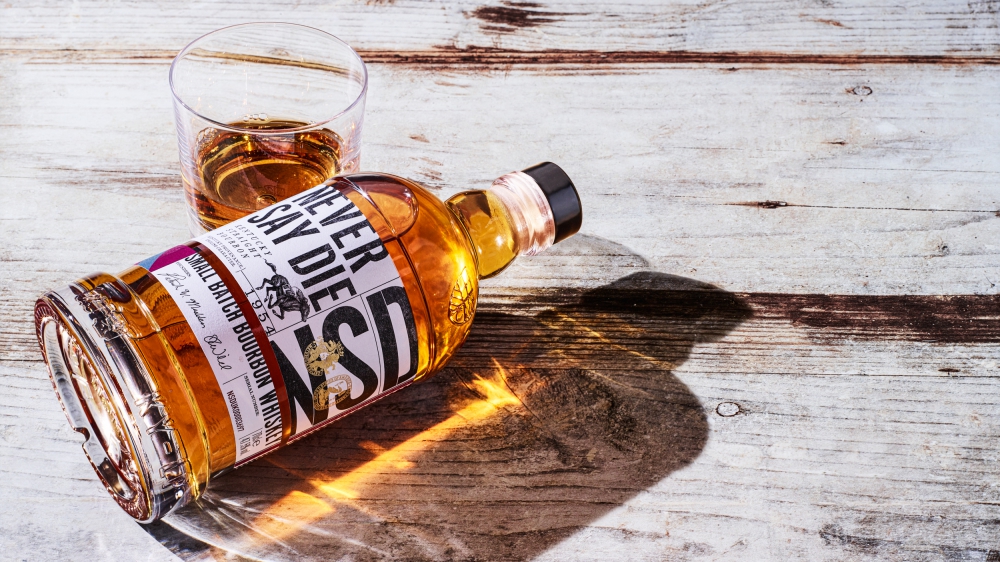There’s a lot to discuss about Never Say Die Bourbon , not the least of which is that it was distilled and matured in Kentucky and then shipped to England to age for another year (which apparently doesn’t disqualify it from being called bourbon). The bottom line that it’s a pretty good whiskey , so let’s dive right into the details. According to the brand, Never Say Die was named after a racehorse born on co-founder Pat Madden’s family farm in Kentucky in the 1950s.
The story goes that the foal was sick and a shot of bourbon revived it—please don’t try this at home, whiskey has no medicinal value—and then went on to win the Derby at Epsom in front of Queen Elizabeth II. Okay, that’s a pretty good story, and who cares if it’s real or not. Here’s where things get interesting.
This bourbon was distilled in Kentucky from a mashbill of 75 percent corn, 21 percent rye, and four percent malted barley. The source is not revealed, just that it’s a distillery 30 miles south of Lexington (check your maps), and that recipe is a pretty common one. The bourbon was aged for about five to seven years in Kentucky before being embarking upon a six-week voyage to White Peak Distillery in Derbyshire, England for a final year of maturation.
Let’s break this down. Per TTB regulations, bourbon has to be “produced in the U. S.
,” which apparently means it doesn’t have to be aged here, or at least not entirely. I reached out to the brand for comment, and cofounder Brian Luftman said the TTB approved Never Say Die as Kentucky straight bourbon because it was aged for more than the required two years in the USA before being shipped to England. I have heard rumors about major distilleries aging bourbon overseas before, so perhaps this practice is more common than we might think.
The ocean voyage aspect brings to mind Jefferson’s Ocean Aged at Sea series of whiskeys that travel around the world on container ships—the point the Never Say Die team makes is the same, that the movement and marine air affects the interaction between whiskey and wood and subsequently flavor. And aging bourbon in England’s mild climate is kind of like Maker’s Mark aging its new Cellar Aged expression in the distillery’s climate-controlled cellar, or Buffalo Trace’s Warehouse X —if anything, that would slow down the maturation, not accelerate it. As always, the most important thing is how the whiskey tastes, and this is a decent bourbon.
It’s surprisingly fruity, with a faint banana flavor that kind of reminds me of Jack Daniel’s (which is not the source, obviously). The palate is classic bourbon, with notes of vanilla, caramel, butterscotch, baked apple, brown sugar, and an undercurrent of spice. Now, there’s no way of really knowing how this bourbon’s trip British invasion really affected the flavor without being able to compare it to a pre-journey sample, despite the claims the brand makes, but the fact is that this is a nice bourbon for sipping or mixing.
There are two other expressions available, a barrel proof version of the bourbon (110 to 115 proof), and a rye whiskey made in the Kentucky style with just 56 percent rye in the mashbill. If this all feels like a gimmick to you, that’s totally understandable—some people won’t drink Jefferson’s for the same reason. But keep an open mind and give this whiskey a try, it’s not going to change your life but it is a solid home bar sipper.
Every week Jonah Flicker tastes the most buzzworthy and interesting whiskeys in the world. Check back each Friday for his latest review . .
From: robbreport
URL: https://robbreport.com/food-drink/spirits/taste-test-never-say-die-bourbon-whiskey-1235433032/



